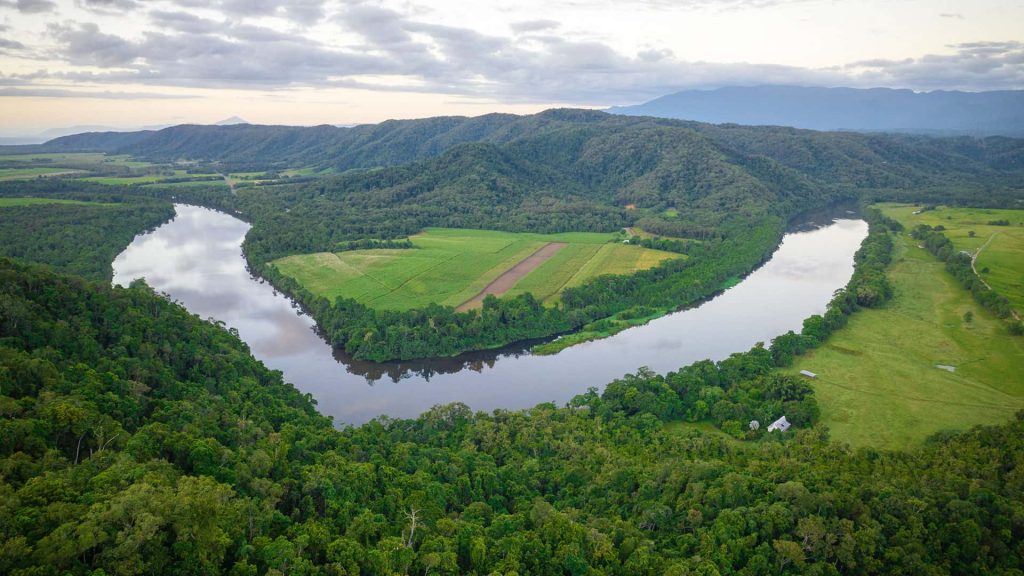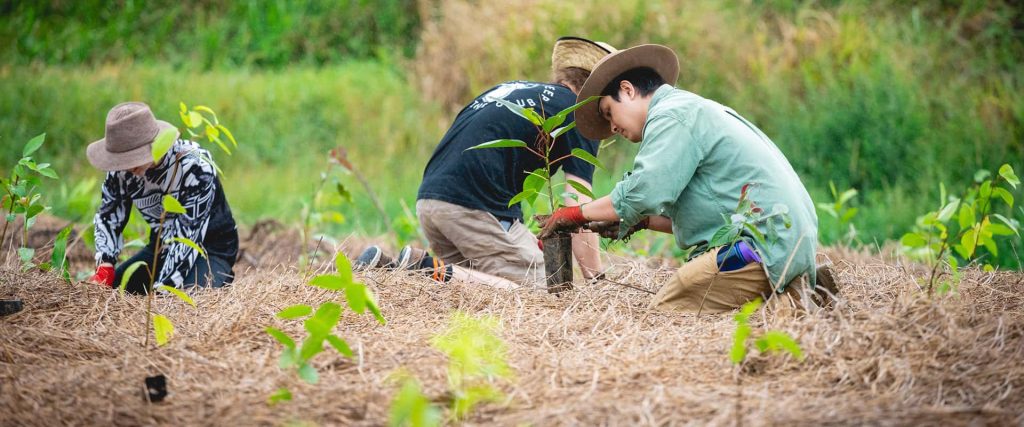Healing the ‘heart’ of the Daintree – Reef & Rivers magazine feature

This article previously appeared in the 2024 edition of Reef & Rivers magazine, published by Wet Tropics Waterways, and is reproduced in full here with kind permission. As a not-for-profit organisation based in Far North Queensland, Wet Tropics Waterways and its partners are motivated by a shared vision to improve the health of our local waterways and the quality of water flowing to the Great Barrier Reef.
Read the 2024 edition of Reef & Rivers in full. The link will open a PDF in a new browser tab or window.
Healing the ‘heart’ of the Daintree
“Imagine our bloodstream with arteries, veins and tiny capillaries, all supported by organs that pump and clean the blood to keep the system in optimal condition. That’s how I view the Daintree and its catchment of creeks and tributaries.”
So begins our conversation with Hayden White, Rainforest Rescue’s land manager. He is passionate about waterway health and uses the image of the Daintree River as an essential organ to explain the impact of revegetating waterways on the health of the Daintree rainforest.
“If our bloodstream falls into poor health, there are ways to heal that system. It’s the same with our waterways. We like to think of what we’re doing as healing the heart of the Daintree.”
Hayden says Rainforest Rescue’s restoration work focuses on the riparian ecotone because this marginal habitat between lowlands and water systems is crucial in stabilising the restored environment, not least because it connects the waterways to the rainforest and reef.

Rainforest Rescue prioritises protecting the under-protected parts of the Daintree rainforest, and now restoration work has shifted up several gears thanks to the organisation’s new native plant nursery at Cow Bay.
“Our restoration and nursery teams are growing. We’re raising more plants, getting more plants in the ground. It’s incredible to be a part of.”
“Now that we’re operating on a larger scale, we can optimise what plants will bring the best results for regenerating biodiversity. The recent floods were terrible, but they provided an opportunity to learn, and we now have a ‘Top 10’ species list of plants that are most likely to survive and thrive. They’re the first in the ground. We build up the species mix as the Top 10 are establishing themselves.”
The team’s next step is gauging outcomes – from wildlife returning to formerly-degraded habitat to water quality improvements. Water testing benchmarks have been taken at restored areas and sampling work will continue to determine long-term benefits.
“Seeing species return to the waterways – like jungle perch, turtles, catfish and cherabin – is so rewarding,’’ Hayden says. “The new root systems are providing homes for them. Waterways are like an ‘animal hub’. After all, we all need water to survive.”
25 years of conservation & protection
Rainforest Rescue has planted over 300,000 trees and protected more than 40 unprotected areas. Over 30 are now part of nature refuges.
Find out more: www.rainforestrescue.org.au/25years
Want more good Rainforest news in your life?
Subscribe to our eNews | Follow us on Instagram | Like us on Facebook | Subscribe to our YouTube channel
Help Protect Rainforests Forever
Donate to Protect Rainforests Forever | Become a Rainforest Guardian for as little as $2 a month | Partnership Options

